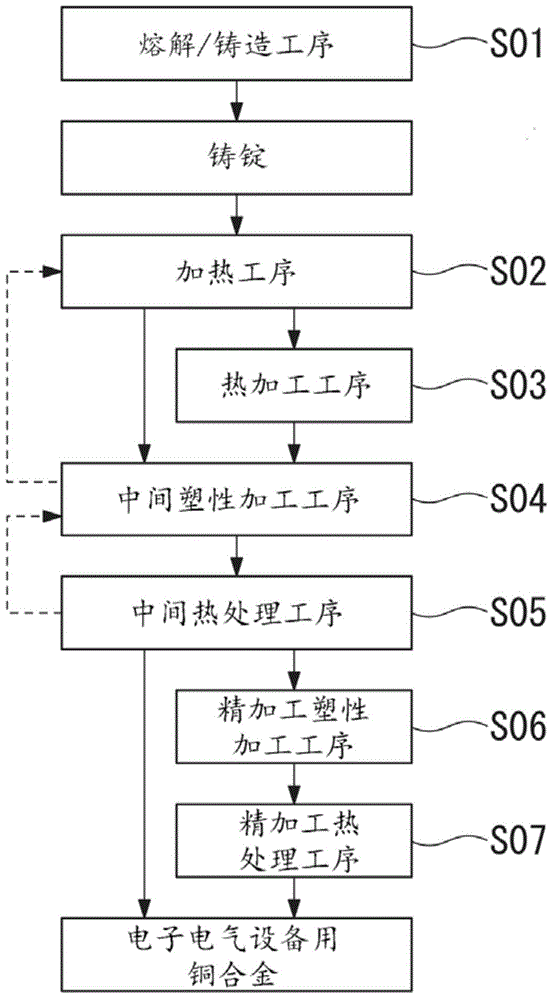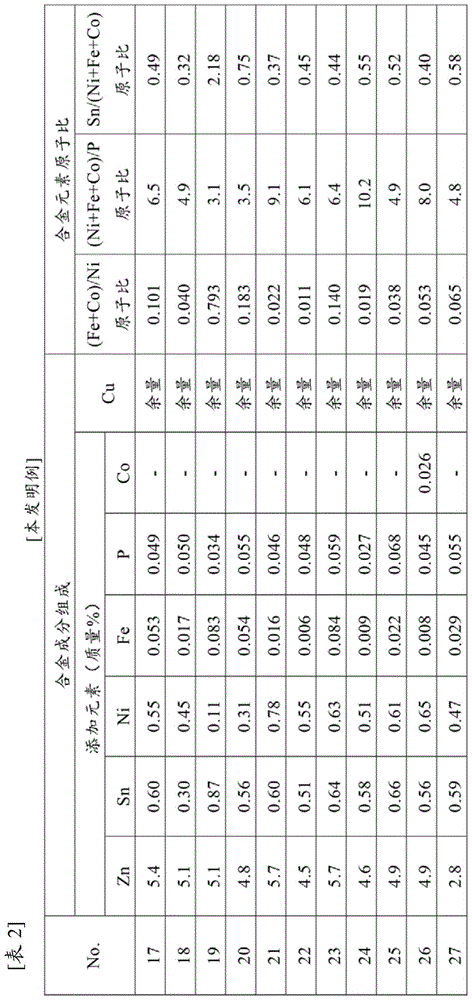Copper alloy for electrical and electronic equipment, copper alloy thin sheet for electrical and electronic equipment, and conductive part and terminal for electrical and electronic equipment
A technology for electronic and electrical and conductive components is applied in the fields of copper alloys for electronic and electrical equipment, copper alloy sheets for electronic and electrical equipment, conductive components and terminals for electronic and electrical equipment, and can solve the problems of improving stress relaxation resistance, rising material costs, and no Considering the stress relaxation resistance of the P compound, it achieves the effect of excellent bending workability and excellent bending balance
- Summary
- Abstract
- Description
- Claims
- Application Information
AI Technical Summary
Problems solved by technology
Method used
Image
Examples
Embodiment
[0139]Hereinafter, the results of confirmation experiments conducted to confirm the effects of the present invention are shown together with comparative examples as examples of the present invention. In addition, the following examples are examples for illustrating the effects of the present invention, and the structures, processes and conditions described in the examples do not limit the technical scope of the present invention.
[0140] Raw materials consisting of Cu-40% Zn master alloy and oxygen-free copper (ASTM B152 C10100) with a purity of 99.99% by mass or more were prepared, and were charged into a high-purity graphite crucible, and placed in a N 2 Melting was performed using an electric furnace under a gas atmosphere. Various additive elements were added to copper alloy molten metal, alloy molten metal having the composition shown in Tables 1, 2, 3, and 4 was melted, and poured into a carbon mold to produce an ingot. In addition, the size of the ingot was about 40 m...
PUM
 Login to View More
Login to View More Abstract
Description
Claims
Application Information
 Login to View More
Login to View More - R&D
- Intellectual Property
- Life Sciences
- Materials
- Tech Scout
- Unparalleled Data Quality
- Higher Quality Content
- 60% Fewer Hallucinations
Browse by: Latest US Patents, China's latest patents, Technical Efficacy Thesaurus, Application Domain, Technology Topic, Popular Technical Reports.
© 2025 PatSnap. All rights reserved.Legal|Privacy policy|Modern Slavery Act Transparency Statement|Sitemap|About US| Contact US: help@patsnap.com



